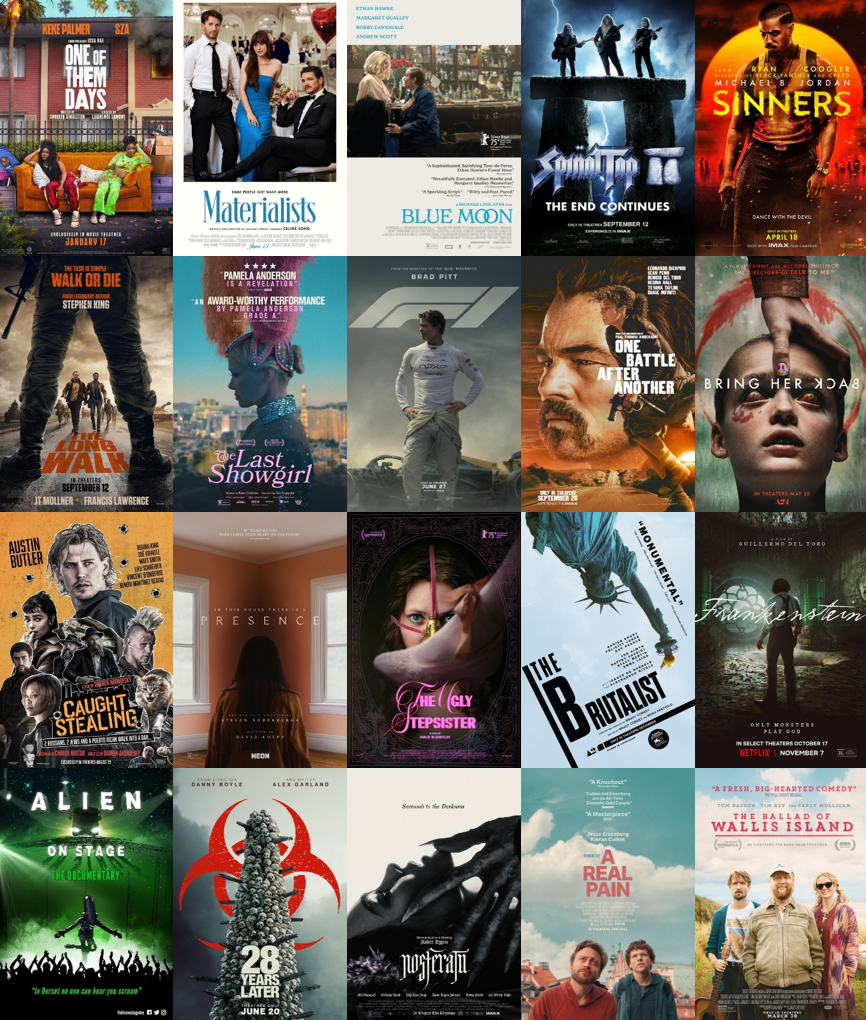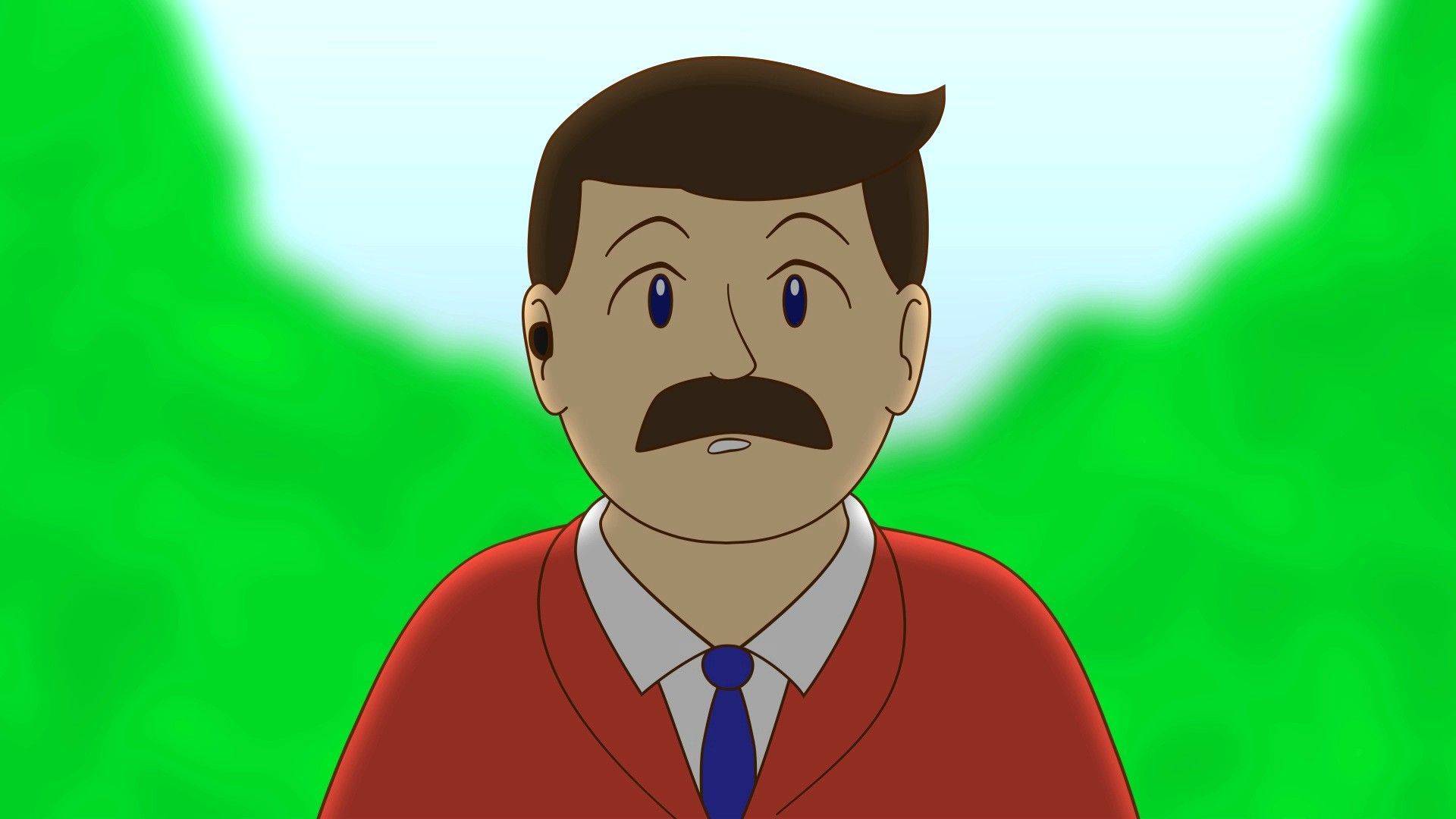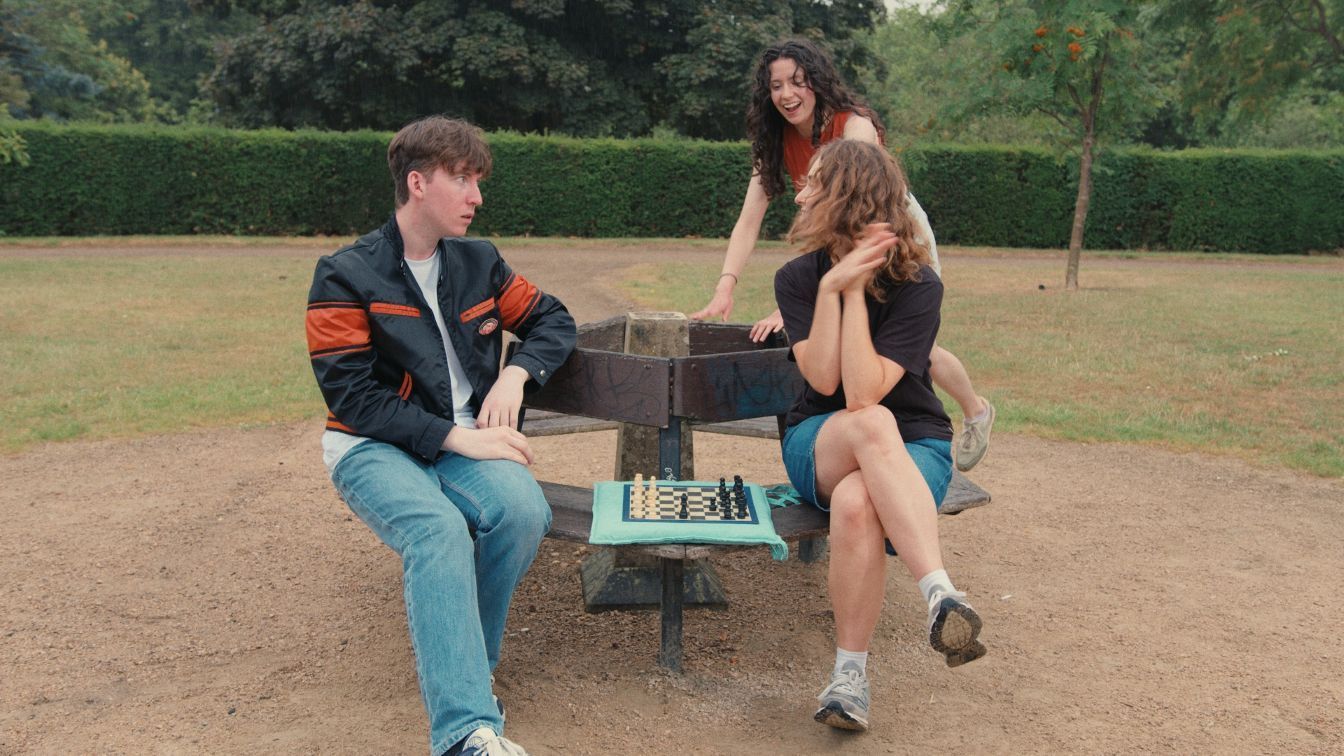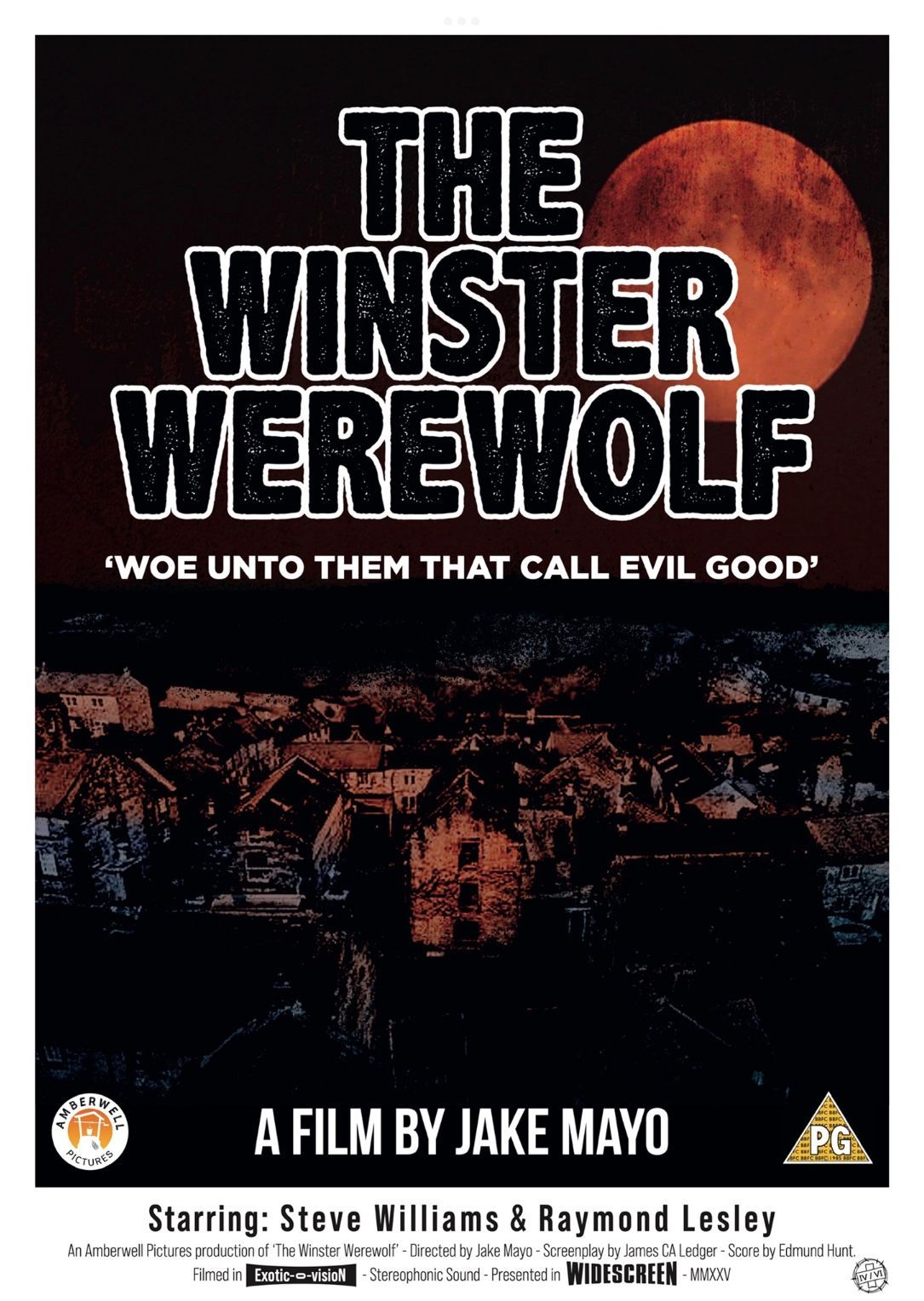How short filmmakers can learn from Back to the Future

"November 5 1955! That was the day I invented time travel" (Doc Brown)
As well as being a timeless 80s classic, it's amazing how a blockbuster film as well loved as Back to the Future can provide a template for some of the best filmmaking techniques of any era. And with that, I’d more than encourage all budding filmmakers (especially those creating shorts) to study the amazing set-up and pay-offs of this fantastic time-travelling comedy.
And if you take a look at just one seemingly inconsequential 5-minute scene early on, you can see the density of foreshadowing, meaning and themes conveyed in its very limited time frame.
The particular sequence in question is roughly 10 mins in, as Zemeckis introduces us to the family of Marty McFly (Michael J Fox). Marty first skateboards between the Lyon Estates signs (& hides the DeLorean behind here later) which quickly establishes the suburban neighbourhood, as well as planting the seed for the 1955 equivalencies we see later on.
Marty arrives at his home & enters (notice the bins seen also at the film’s end). Despite the basics of this scene used to show his dad still being bullied, and some expository information about the family, there is so much more symbolism and thematic interweaving taking place.
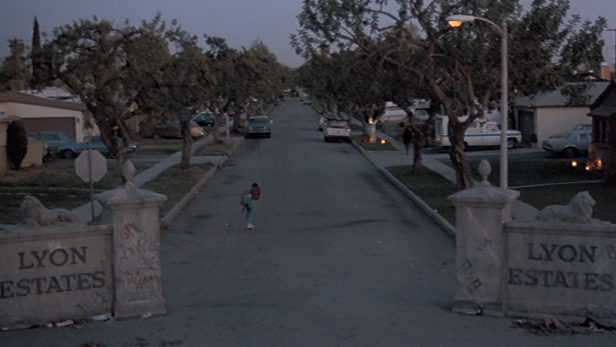

The family’s car has been smashed by Biff Tannen (Thomas F Wilson) frustrating Marty who is now unable to take out his girlfriend Jennifer – connoting both the importance of the women in his life and strangely their link to cars (e.g. his mum at school in 1955). The broken vehicle also foreshadows the often-damaged DeLorean – with its failure in the past and again when Marty can’t start it on his return to 1985 to save Doc’s life.
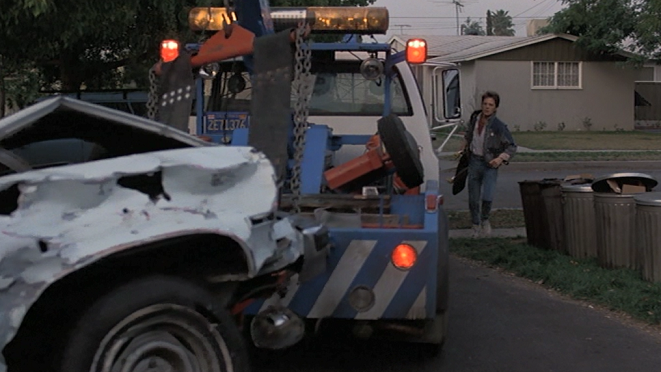
This point also echoes Biff’s careless driving and crash into the manure truck in 1955. Marty is told he caused “$300 bucks damage” to Biff’s car – foreshadowing a thematic parallel with the accident costs he’s intending to place on George’s insurance in the present.
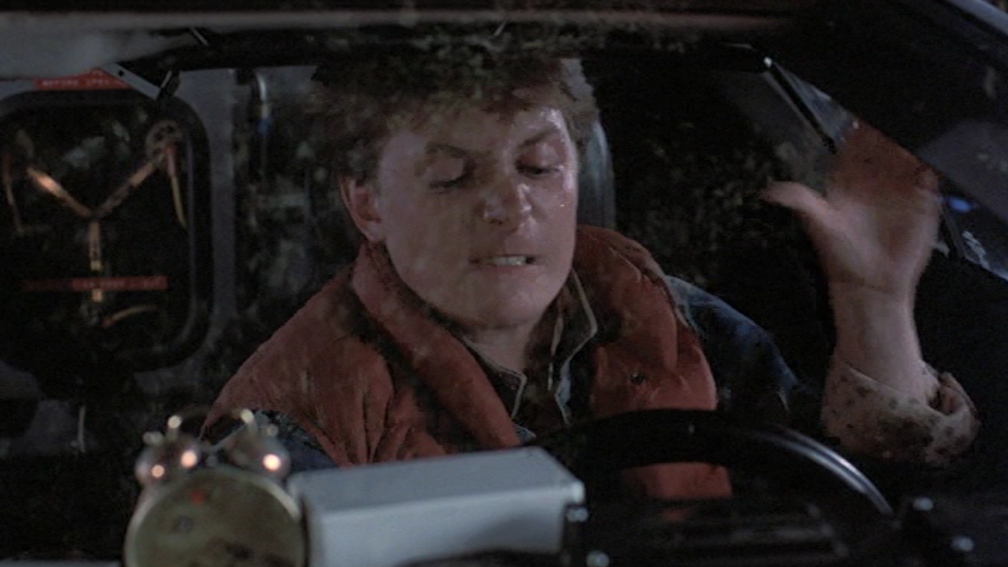
Speaking of Biff, his Donald Trump-style slimeball routine parallels the odious businessman (more obviously so in BTTF Part II) and his ill-fitting chequered slacks mirror his plaid shirt from his school days showing he’s not moved on, still playing the role of George’s bullying ‘boss’.
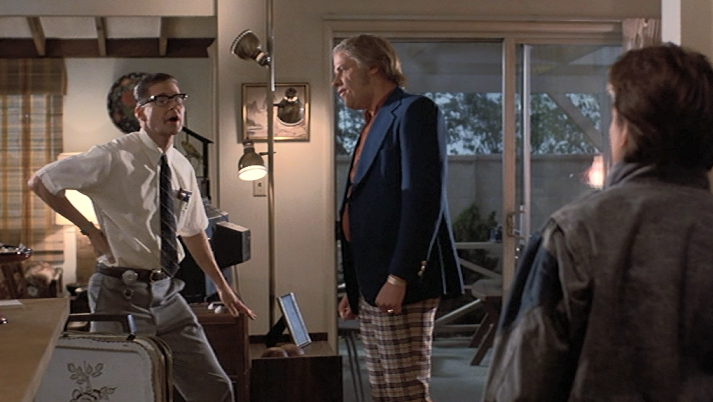
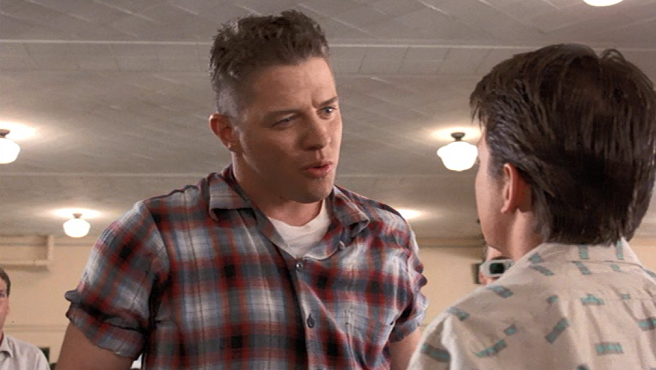
The dialogue also hints the ‘accident’ was possibly owing to Biff’s drink-driving and Zemeckis then has him opening the fridge and helping himself. Although suggesting he simply likes to steal a drink, the fact Biff is seen opening the door to get something of George’s certainly has hints of something else...
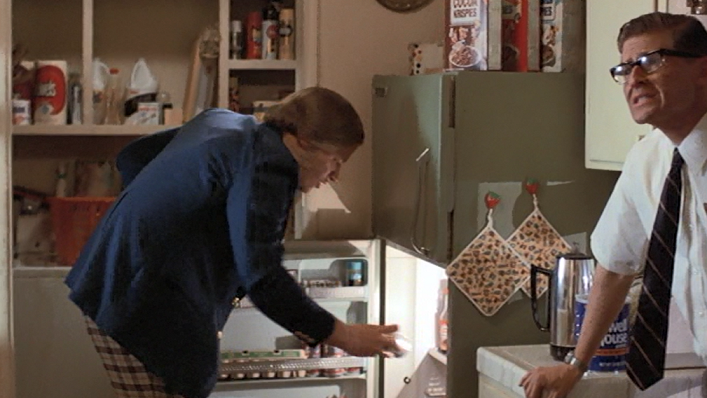

Speaking of George, his wimpy portrayal is reinforced with his archaic 1950s greased hair, and this also connotes he is still stuck in the past too. His wardrobe reminds us of NASA mission controllers, especially ringing true with the space-man motif returning later alongside George’s dreams of becoming a sci-fi author.
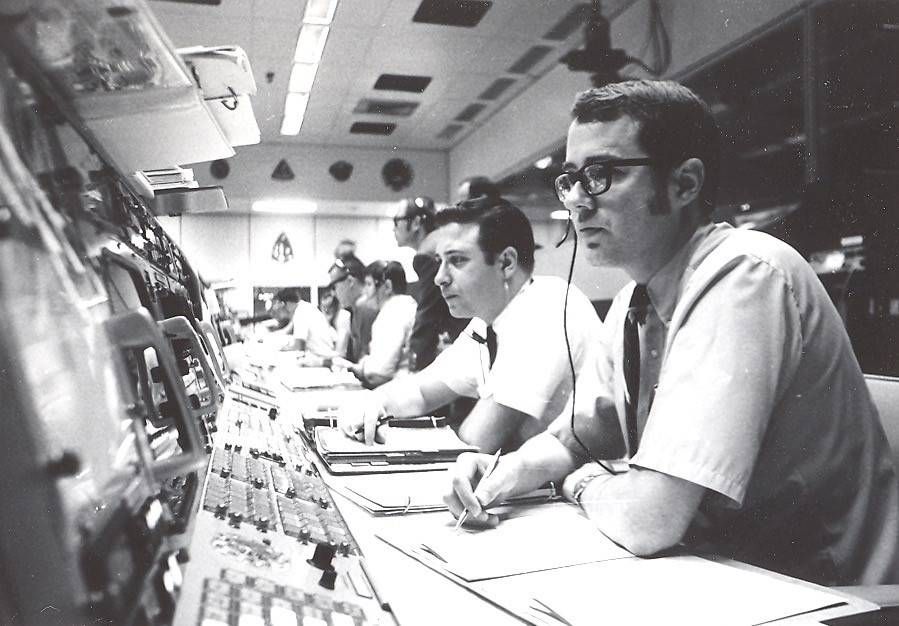

Just a single line of efficient dialogue “I’m not good at confrontations” sets up George’s character motivation – if he can overcome this fatal flaw, his life would improve for the better. Rather brilliantly, Crispin Glover’s fantastic performance sees him clench his hand into a fist at the exact moment he says it.
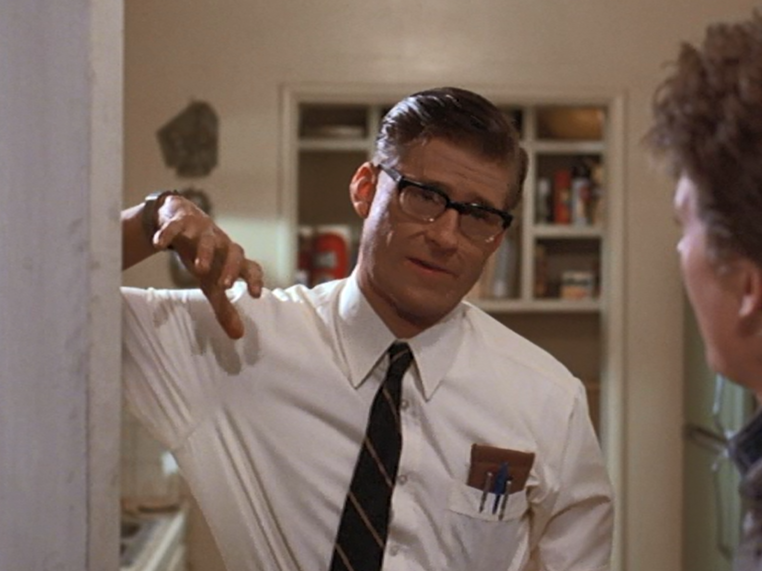
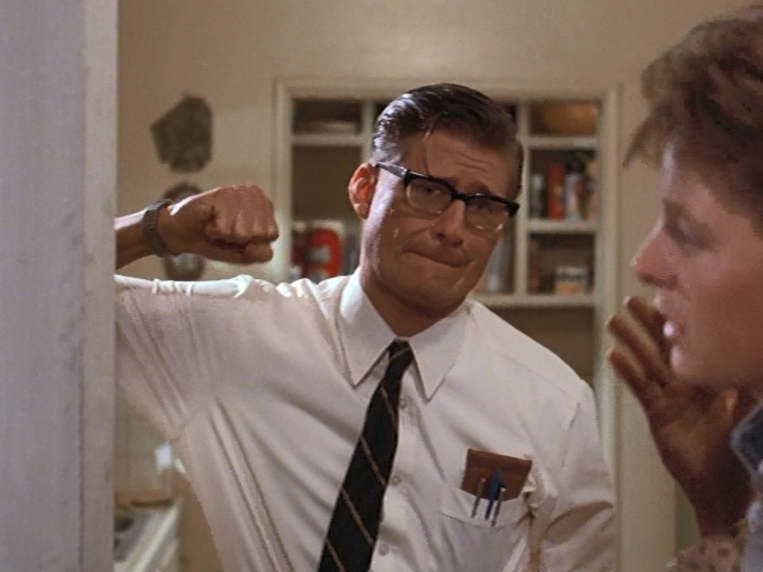
Confrontations and a fist, eh?
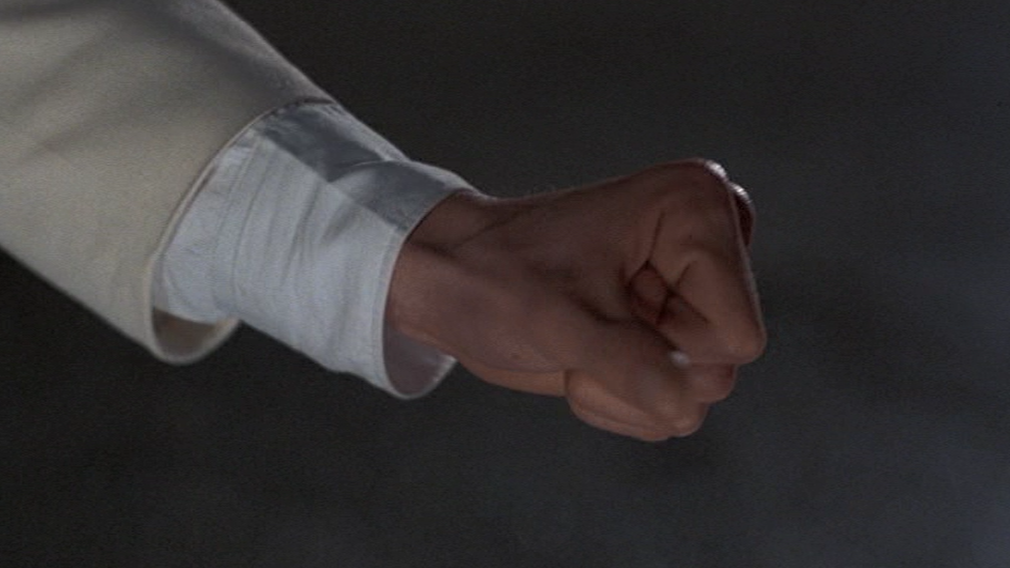
Before leaving, Biff torments George by wrapping his knuckles on his head and demands he do his reports (“homework”) – an act repeated in the 1950s diner. It’s interesting how the foreshadowing is technically reversed for the audience – receiving the clues in 1985 before the 1955 events – but providing the same narrative function as if it were a linear time narrative.
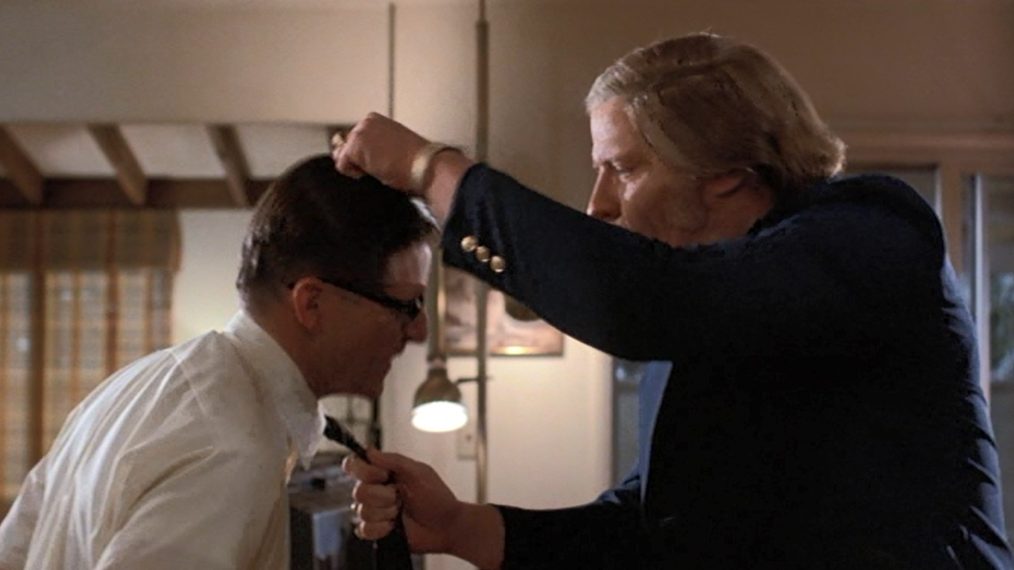

As Biff leaves, a curt “Say hi to your mum for me” aimed at Marty cements his sleaziness, and we cut to Lorraine McFly (Lea Thompson) drinking a large glass of vodka. Later in the movie we see Marty warning his younger mum about the perils of drinking when they park the car before the dance.


When we move to the dinner table we are introduced to Marty’s brother (David) and sister (Linda) who importantly disappear from the photograph later. This whole scene is repeated again with Lorraine’s parents with family intro, TV and dinner back in 1955.
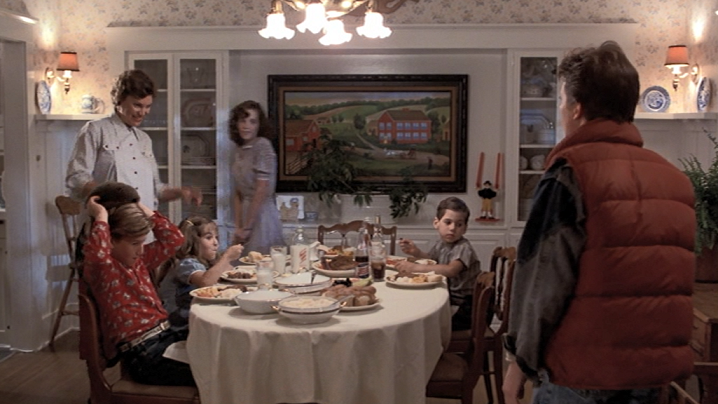
Lorraine reminisces about the Enchantment Under the Sea Dance giving the audience, and importantly Marty, the family’s backstory to contextualise (and eventually go on to change) the events of the past. If George hadn’t been hit by the car “none of you would have been born”, she explains. Nail on head.

With Marty exclaiming that the “Woman was born a nun” earlier in the film, Lorraine doth protest too loudly how she “never chased a boy or sat in a parked car with a boy” which is shown false later. She continues her story about George being struck by her father’s car (vehicles crashing again) and we get the “birdwatching” & “night of the terrible thunderstorm” breadcrumbs laid.
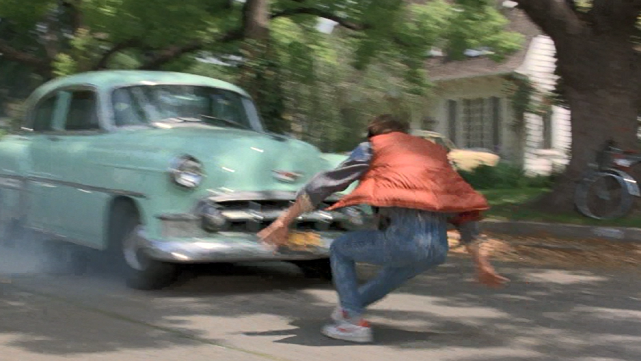
Lorraine also presents a cake made for the expected (but failed) parole of her brother Joey. She utters, “We all make mistakes in life, children” showing regret and perhaps wishing she had also chosen another path in the past. More obviously, “Jailbird” Joey is told to “get used to the bars, kid” when in his playpen back in 1955. Lorraine’s mother confirms Joey’s future long-term prison sentences as she “leave him in there all the time”.
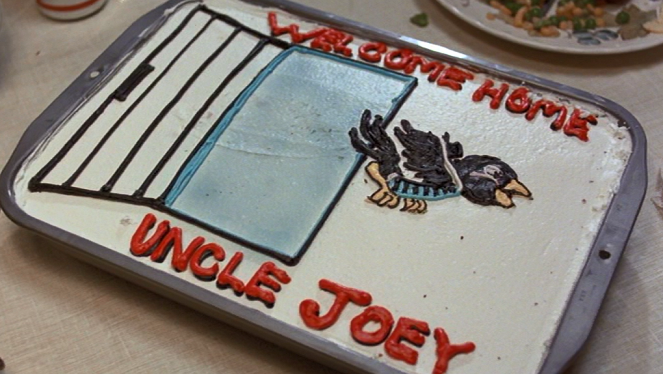
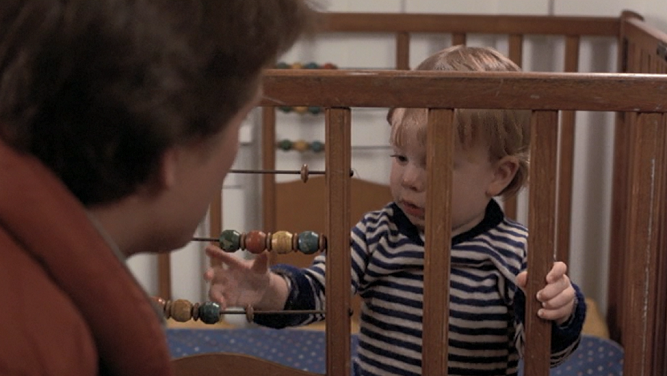
George is eating peanut brittle which is similar to the breakfast cereal in the 50s showing he's still a stunted man-child. More context to this is shown as George is walked over by a neighbour in this deleted scene: https://www.youtube.com/watch?v=8U5KRVfYUFE
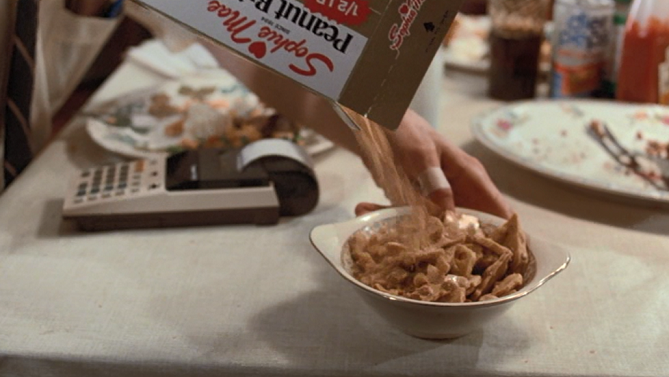
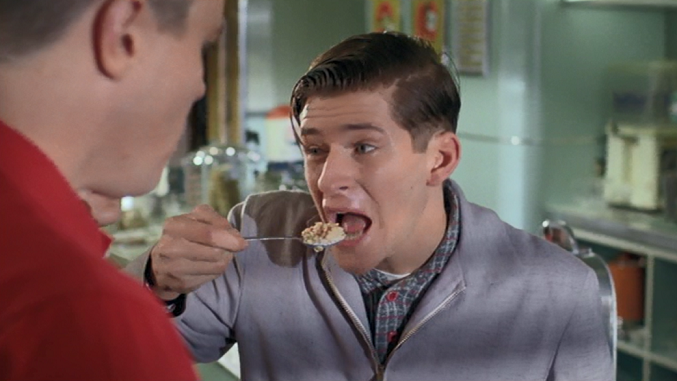
George is distracted by the TV, laughing at The Honeymooners in an episode where Ralph “Dresses up as a spaceman” (science-fiction allusions again). Later Marty remembers watching this, and claims to have “seen this one” when viewing it again - despite it being broadcast live to the confusion of Lorraine’s family in 1955.
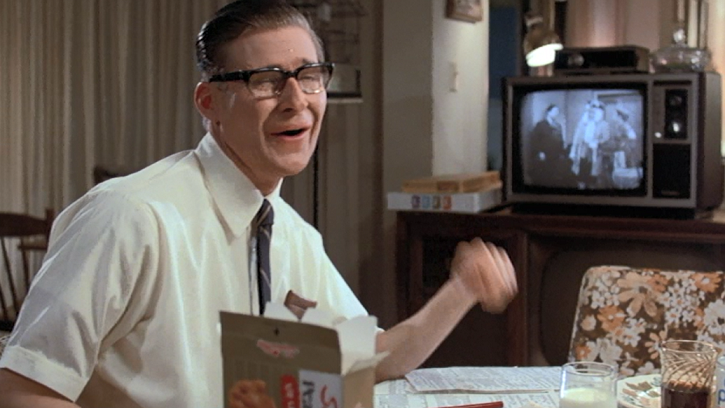
In addition, George is seen writing at the table (doing Biff’s reports no doubt) but also hinting upon his future penmanship as a novelist.
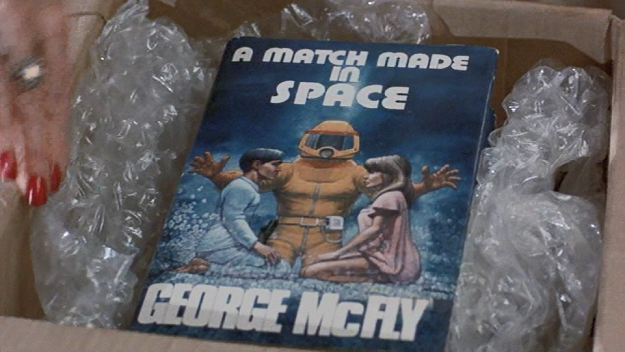
George tells Marty that he’s “better off not having to worry about playing [guitar] at that dance” which his brother follows up with “The last thing you need, is headaches”. Obviously this is more than true given how hard Marty smacks his head on the asphalt when hit by the car in 1955, which is the beginning of his time-messing shenanigans.
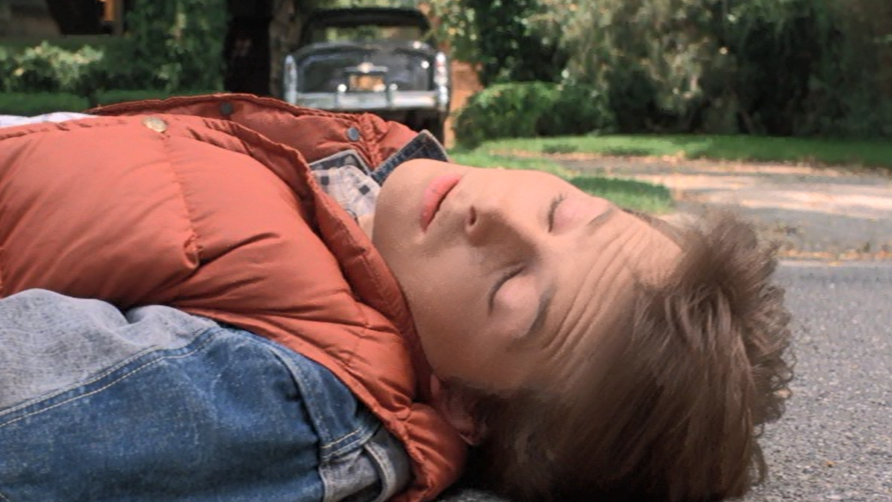
This 1985 dinner scene also reveals two of the three TVs Marty claims his family has when chatting at Lorraine’s parents’ dinner table in 1955 (the other being in his room). And television plays a prominent role in the movie as a whole – with Marty’s camcorder, the Ronald Reagan joke & George watching Science Fiction Theatre.
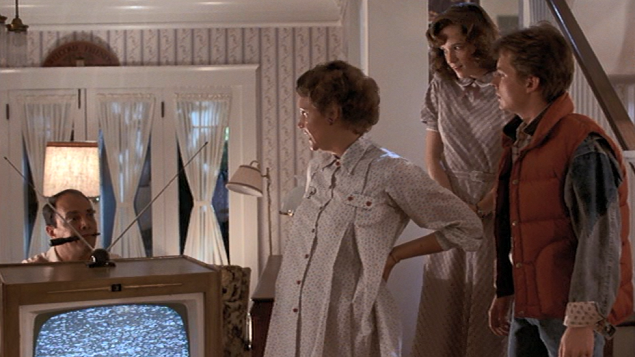
And so as David heads off to work, he gets up from the table and mentions its “time to change that oil” referring to his dad’s 50s hair (which is ANOTHER broken car link AND a reference to time AND a reference to things changing). Genius scriptwriting.
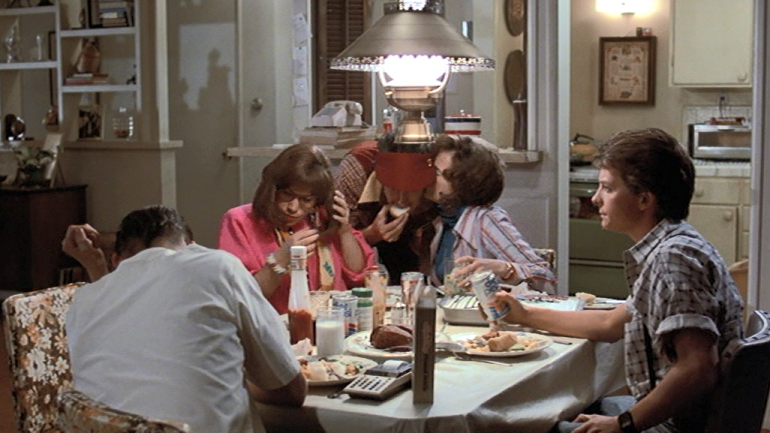
It gets better...David says he’s going to be late, but Lorraine demands her son kisses her goodbye before going as well. So just to clarify, in this scene she forces her son to come and kiss her as he tries to get away on time. Get it?
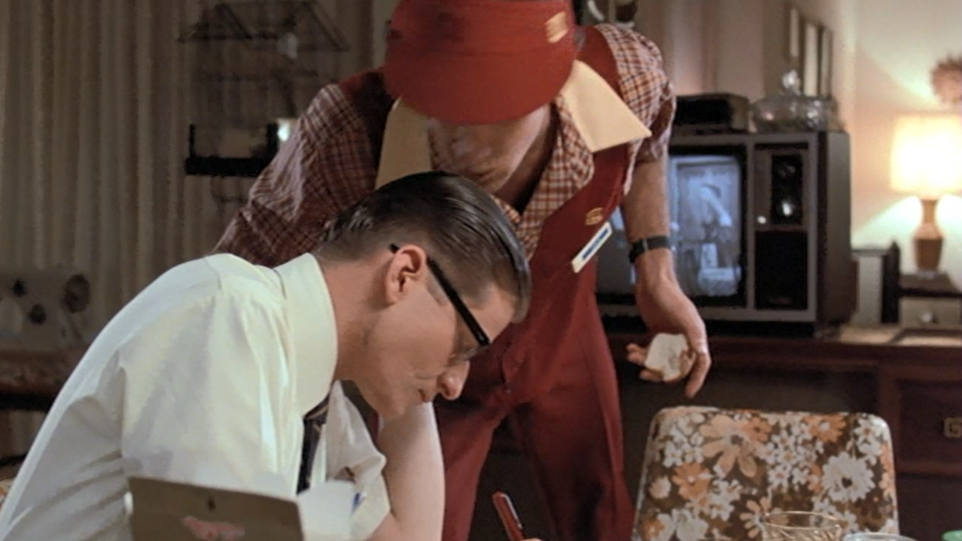
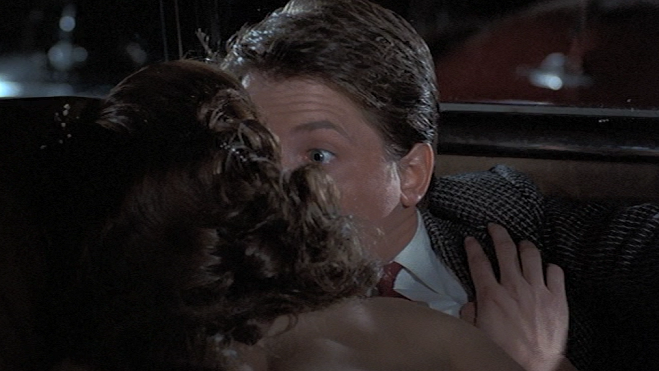
And that’s it! This short sequence begins at 11:20 as Marty skateboards up the street and ends at 16:43 with him waking up to go the Twin Pines Mall to meet Doc. All this info was given within a timespan of just 5 minutes & 23 seconds. The length of a solid short.
Put together all thiscould be seen as Zemeckis simply repeating the 1985 events in the 50s era. Whilst true in concept, the reason it works so well is actually the importance these moments have on character development, plot points, enriching the story and sowing thematic seeds in a perfect set-up and pay-off script.

I’ve seen hundreds, possibly thousands, of short films over the years and examining a short sequence like this can hopefully illuminate how much can be conveyed in just a 5-minute one-location scene. Props, dialogue, mise-en-scene, metaphors, themes – sometimes even just a single line or word – all brilliantly, and seamlessly, working together.
You can see Bob Gale's brilliant script working in tandem with Robert Zemeckis’ direction making it the time-less classic we love today. And this scene is one of many that is emblematic of the great craftmanship and consideration that went into their scenes, even one as short as this.
Michael Sales

